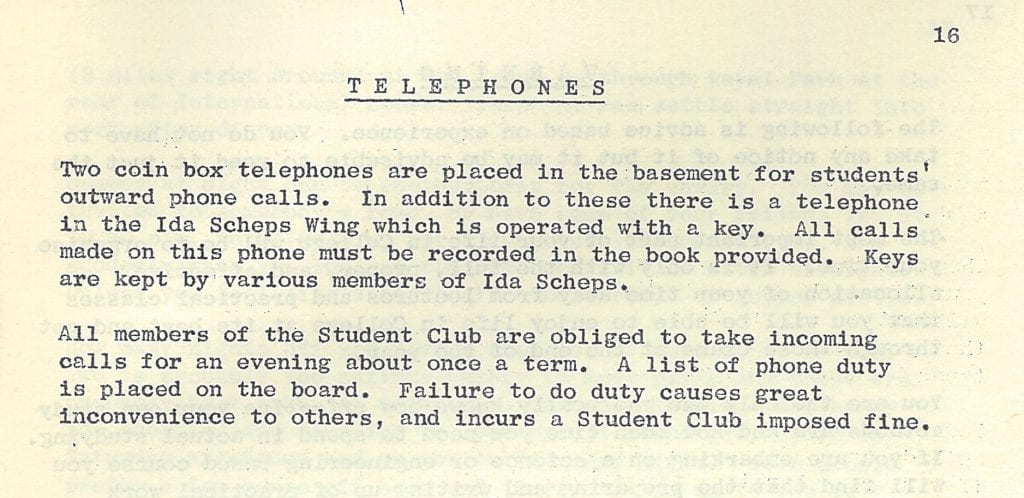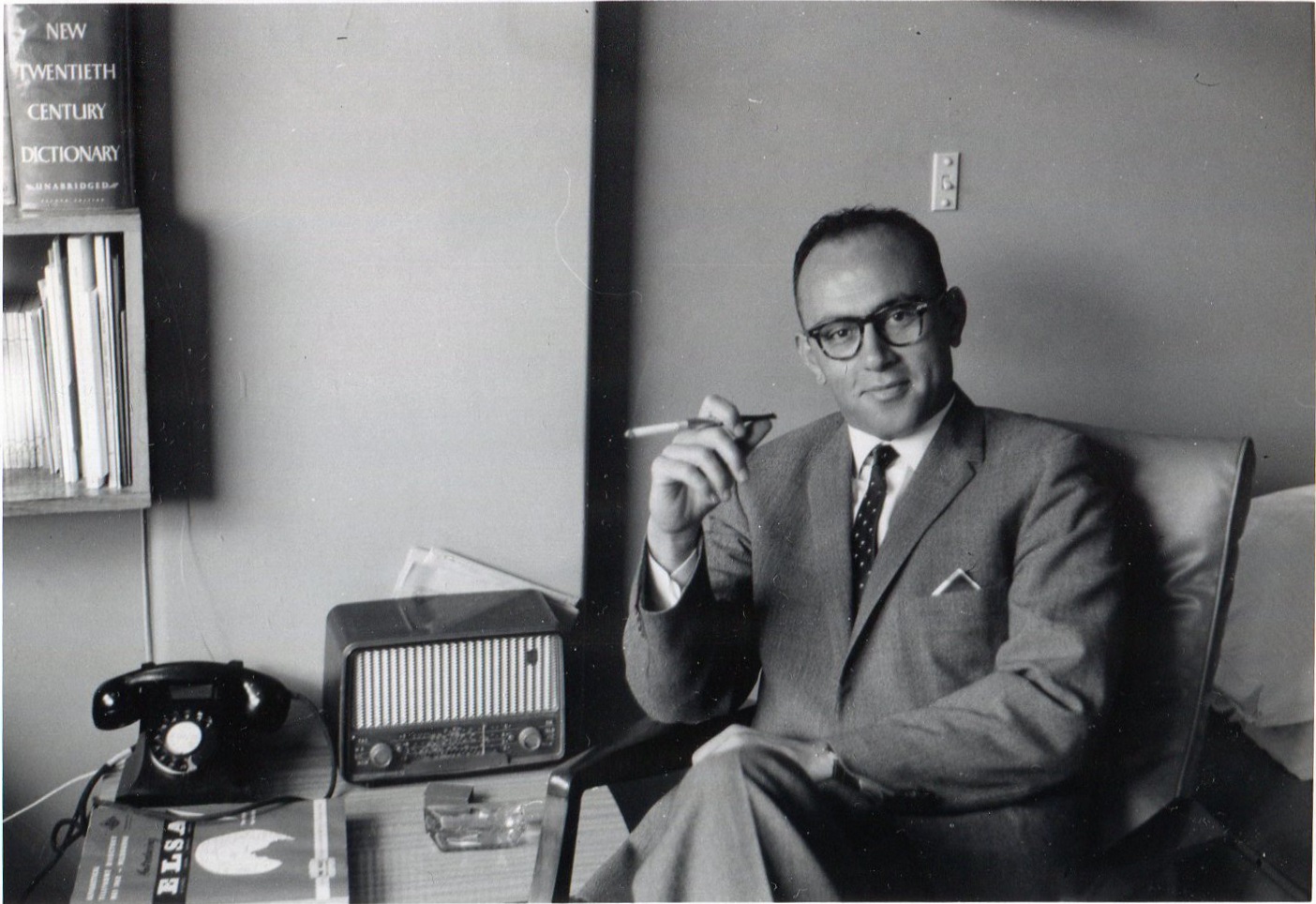
Can I leave a message?
Telephones have long been an important part of life at IH allowing contact with family and friends overseas or interstate. But using or even finding a phone wasn’t always easy. Before mobile phones, telephones tended to be chunky, heavy and often affixed to a wall; in other words, immobile.
The first IHers had access to a few fixed telephones which they shared with the other residents. The “Rules of International House” stated:
Members of the House are collectively responsible for the telephone accounts for their telephones, FJ 2584, FJ 2589 and FJ 4709. Local calls are 4d. [4 pence] each. Long-distance calls must be entered at the time of making them in the book provided. The Treasurer of the Club will render accounts to members when the bills come in. The Club will be collectively responsible for any deficit necessary for making up the full amount of the account.
(“International House: Regulations and General Arrangements”, International House Council Minutes, 17 September 1958).
Telephone numbers in Melbourne at this time were made up of two letters and four numbers. To phone a friend at IH, you would have dialled 3, 4 (for “FJ”) before you dialled the other numbers.
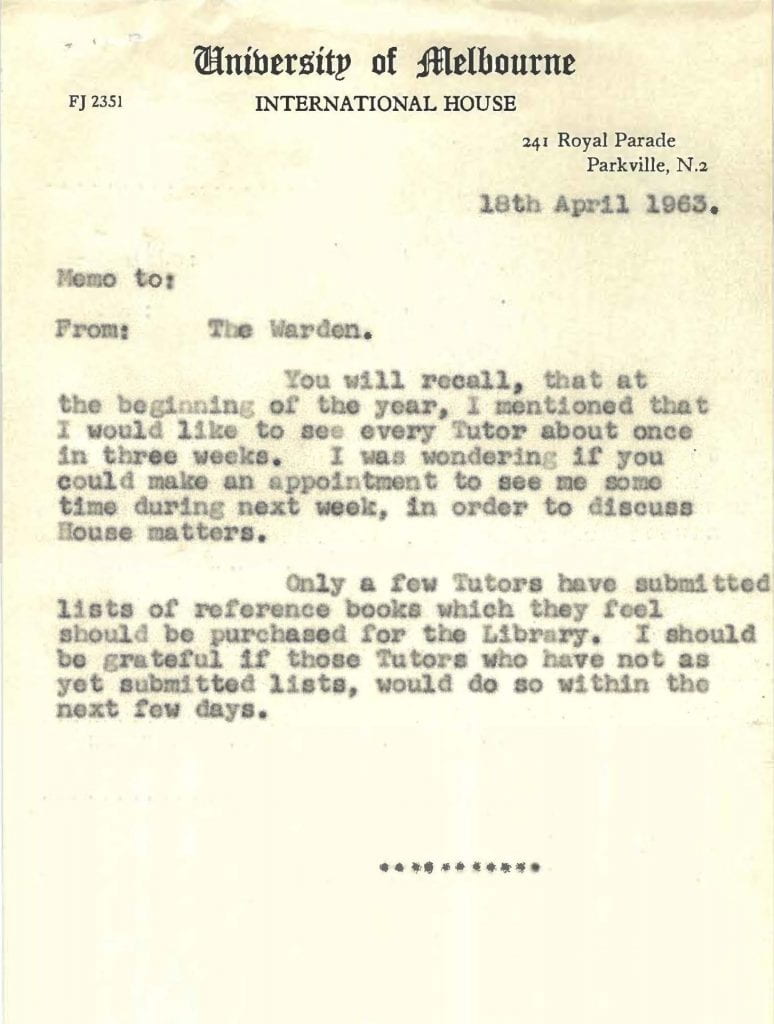
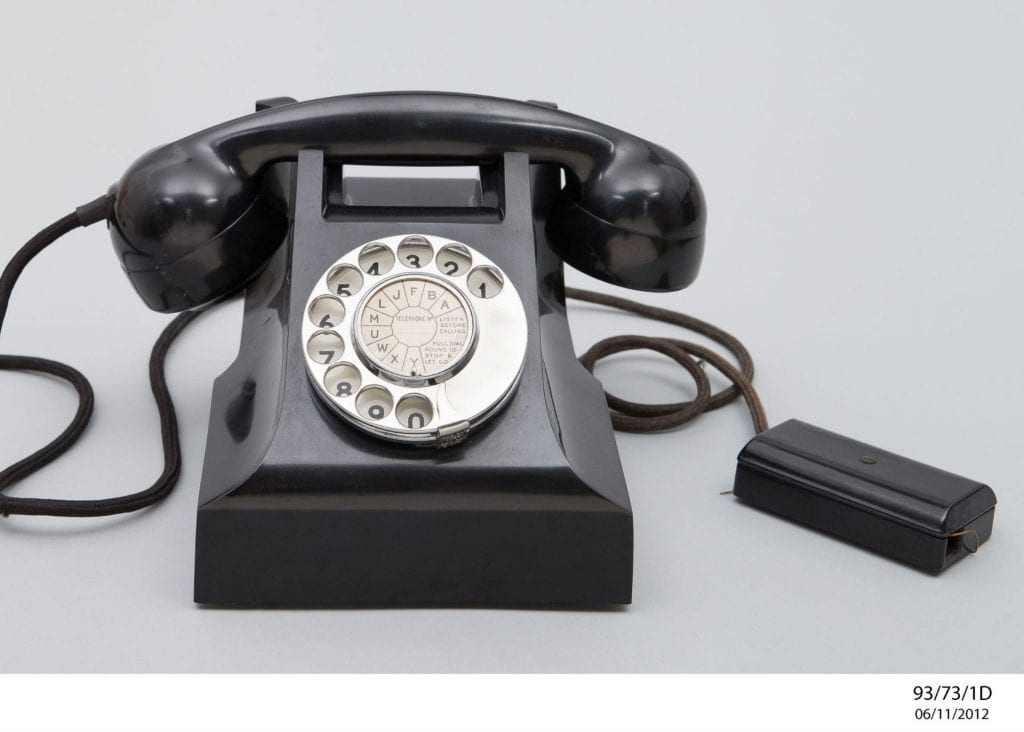
In the early 1960s, ‘students’ telephone cubicles’ were located on the ground floor (lowest level) of the Samuel Wadham Wing (Selamat Datang, 1963, p. 7). The telephones were coin-operated, and new IHers were advised to get a supply of pennies ‘on trams, in hotels, and at banks’ (Selamat Datang, 1963, p. 12).
By the early 1980s, there were ten telephones spread across six buildings. Everyone was expected to answer a ringing telephone ‘and to fetch whoever the caller is seeking’. New residents were asked to tell friends ‘the number of the phone CLOSEST to you!’ (O’Week ’83, 1983, no page number). Some phones were only for incoming calls. It seems there was competition to use the phones, as in 1985 Selamat Datang reminded everyone that there was a telephone box for making calls overseas outside the National Science Building (now the apartment block next door to the George Hicks Building).
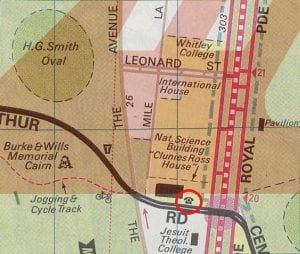
In 1984, the Student Club decided to use some of the funds raised at Cafe Internationale ‘to install an ISD/STD telephone as soon as possible, as most of our students are from overseas or the country and found it difficult to phone’. Making calls from the public phone outside and so close to Royal Parade was difficult due to ‘traffic noise and security.’
Sharing telephones inside IH wasn’t necessarily easy either. An article in Satadal in 1987 describes some of the potential arguments brought about by sharing a telephone:
The reactions to its ring run to extremes. For weeks, when the phone begins to ring, the response is so slack that either a resident from 1st or 3rd floor resorts to answering it (as it ought to be – the bulk of the calls are for them), or someone becomes so frustrated that they finally run for the phone just as the bell dies away. Alternatively, there are periods when one must fight the hordes in order to reach the telephone first. Doors near the phone are terrorised – paper disappears, and so do pencils.
(“Second floor Clunies”, 1987)
Mobiles have taken away arguments about who should answer a ringing phone; but perhaps they’ve also taken away the chance of an accidental chat with someone calling a friend who had failed to provide the number of the phone “CLOSEST” to them.
References
O’Week ’83 International House: Selamat Datang. (1983). International House Student Club.
Second floor Clunies (1987). Satadal, no page number.
Selamat Datang: Introduction to International House (1963). International House Student Club.
Selamat Datang: Introduction to International House (1967). International House Student Club.
